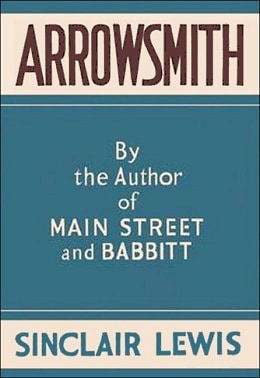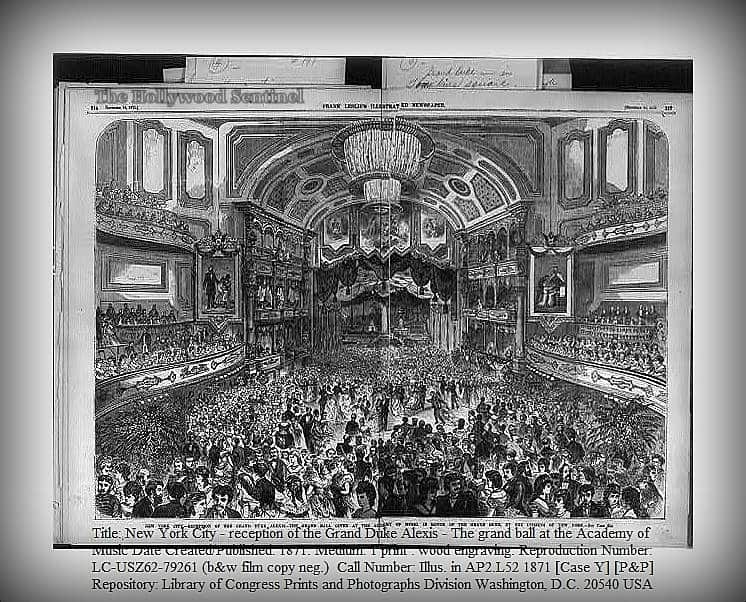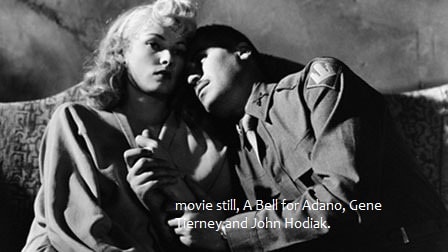
Review by Moira Cue
Moira Cue is an award winning fine artist, singer, songwriter, and art and literature editor of The Hollywood Sentinel, who is reviewing every Pulitzer Prize winning novel ever written.
If any Pulitzer Prize winning novel has lessons in particular for 2020, it is Sinclair Lewis’s Arrowsmith, written as a sort of exploration of if not outright homage to the science of epidemiology (loosely translated, the study of epidemics). It was published in 1925, not long after what was then referred to as the Spanish Flu epidemic of 1918 (now referred to as the 1918 flu or an H1N1 flu outbreak) that killed an estimated 50 million people worldwide.
Sinclair Lewis is known today by animal rights activists as an early expose of the meatpacking industry for a previous novel, The Jungle, published in 1906. The book was intended as “the Uncle Tom’s Cabin of the labor movement,” but what Americans reacted to was the treatment of animals and the unsanitary conditions described, rather than the treatment of workers. The book led to major reforms. We can only imagine what he would think about today’s factory farming and slaughterhouses.
Sinclair Lewis, a socialist, rejected the Pulitzer Prize awarded for Arrowsmith in 1926. In his non-acceptance speech, he decried the phony morality of the prize. Some speculate his piquant vitriol was merely a veneer for sour grapes over a previous snub.
The book’s protagonist, Martin Arrowsmith, is a self-involved chauvinist. Hardly an anomaly among Pulitzer Prize winning novels (cough *John Updike*). In college he simultaneously dates two women; the self-effacing doormat Leora and a high society girl named Madeline. In fact he goes so far as to propose to both, and then invite them both to lunch together to let him fight it out. In other words, he is a classic narcissist:
He was grim. He could do it now, if he got over it quickly. “Madeline! Brought you two together because-Don’t know whether you cotton to each other or not, but I wish you could, because I’ve-I’m not making any excuses for myself. I couldn’t help it. I’m engaged to both of you, and I want to know-“
Madeline had sprung up. She had never looked quite so proud and fine. She stared at them, and walked away, wordless. She came backed, and touched Leora’s shoulder, and quietly kissed her. “Dear, I’m sorry for you. You’ve got a job! You poor baby!”
And that settled that little triangle, after which Leora mentions that she’s not very important and that he only loves her because she lets him bully her. It is a marriage of a Very Important Man (a doctor and scientist) and a long-suffering, self-sacrificing nurse who makes him sandwiches while he studies and praises his brilliance endlessly.
If Arrowsmith’s marriage(s) were the only subject of this novel, it wouldn’t be worth reading, much less Pulitzer-worthy. But the doctor/research scientist is even more in love with pure scientific inquiry than he is himself. And that is the book’s redeeming virtue.
As fiction, the book’s structure and tone could have served as a model for the 1997 Pulitzer winner set in the same time period, Steven Millhauser’s Martin Dressler: Tale of an American Dreamer. Both books center on a larger than life protagonist (both Martins) who “jumps the shark” around 75% into the third act of the book. In other words, the narrative piles fantasy on top of grandiosity, and veers into the satirical, farcical absurd. Martin Dressler builds a hotel that makes Mall of America and the Versailles of Florida look minimal and subdued. Martin Arrowsmith cures a tropical plague (which unfortunately puts Leora out of her subservient misery) and is conveniently free to marry a wealthy socialite who funds his research laboratory with millions in love money. Of course, he jilts her too, because she wanted him to be “present” and he prefers to work in isolation, in a backwoods cabin, rather than be interrupted by tennis matches.
One of the sections I find most engaging and realistic is when Leora and Martin move to Nautilus, where Martin accepts a position within the small town Department of Public Health. (Throughout the book, Dr. Arrowsmith is pulled between two halves of his great passion, the “real practice” of medicine, and the “pure theory” of research. At every step he is countered by corruption; big money, small minds, provincialism and capitalism.) Describing the fictional town of Nautilus, Sinclair writes,
“Iowa has the richest land, the lowest illiteracy rate, the largest percentage of native-born whites and motor car owners, and the most moral and forward-looking of all the States, and Nautilus is the most Iowan city of Iowa.”
To Arrowsmith’s credit, he hates it there. He refers to his boss, Dr. Pickerbaugh, as “the worst poet who ever lived” and says he knows “less about epidemiology than I thought any one man could ever learn.” Less to his credit, he fantasizes about Pickerbaugh’s teen-aged daughter, Orchid.
Luckily for Martin, Dr. Pickerbaugh makes a successful run for Congress despite lawn signs that read:
For Congress
PICKERBAUGH
The two-fisted fighting poet doc
Just elect him for a term
And all through the nation he’ll swat the germ.
Luckily for Leora, Orchid goes to Washington with her father without ever getting much farther than batting her eyelashes at Dr. Arrowsmith. In Pickerbaugh’s absence, Arrowsmith is appointed the Acting Director of Public Health of Nautilus.
Once Arrowsmith takes over the Department, he changes it completely, believing his predecessor to have spent half his time making inspirational speeches. He wants to record race and socio-economic conditions of all newborn babies as part of an effort to track the effects of poverty and living conditions on the spread of disease. He “makes his first mistake” assigning his assistant to work in the free clinic, which upsets the “good” citizens of the town who don’t want public health officials supporting “freeloaders .” He is also responsible for the routine work of quarantines and anti-tuberculosis placards. Unlike his predecessor he worried about the killing of rats and fleas. And unlike his predecessor he was obsessed with his own research. He accidentally discovers that the maximum production of hemolysin (a substance in the blood that destroys red blood cells) was between four and ten hours. But his research is interrupted by the favorable court ruling granting him authority to tear down a row of tenement slums (owned by an unscrupulous but politically-connected woman) that were breeding grounds for TB. This is one incident that begins a domino effect of other social faux-pas that lead to Martin becoming very unpopular (he is referred to as The Schoolboy Czar). And once the narrow-minded public rejects him, he has to leave town and seek work at a research institute.
The idea of public health being a role that government should be responsible for is not as old as the Constitution itself; it is only about as old as the Pulitzer Prize. The moralizing, cynicism, and contempt for society that Sinclair (a Socialist) shows notwithstanding, this is a novel that has been beloved for decades by medical students because the real hero isn’t Martin Arrowsmith, it’s the possibility of medicine to cure disease. Whether you are an anti-vaxxer or a World Health Organization devotee in the mold of Bill Gates, or somewhere in between, this book makes medicine interesting. Sinclair is facile with ideas. He shows us that issues we think of as contemporary; such as the debate over public health versus personal freedom, the role of money and politics in pharmaceutical research, and understanding and stopping the spread of communicable diseases, have a history that goes back to the turn of the twentieth century. Much of what science has set out to do-eliminate germs through antibiotics, eliminate viruses through vaccines, etc.-comes with a Pandora’s box of ethical conflict and the ability of the microscopic to evade our weapons.






